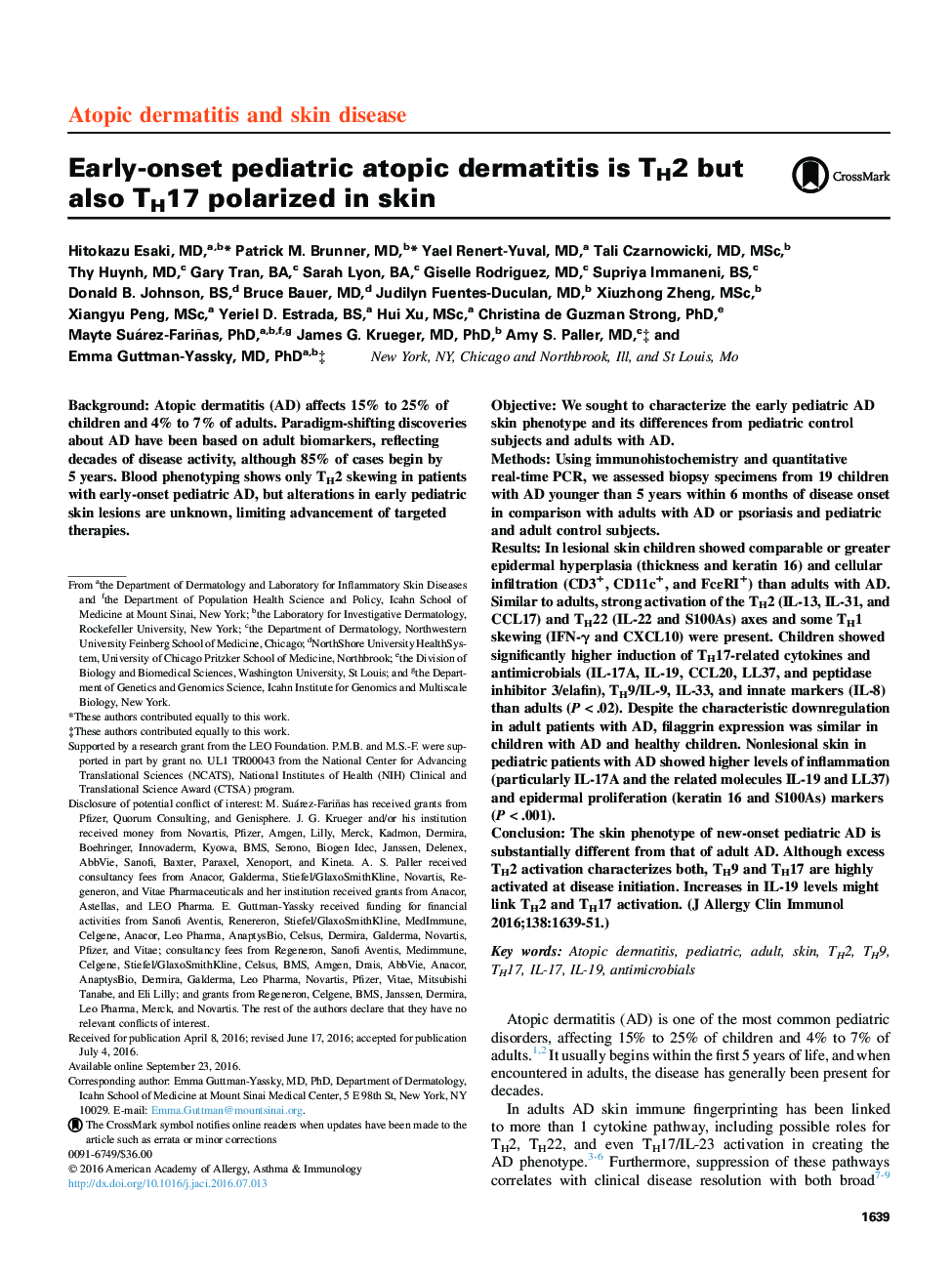| کد مقاله | کد نشریه | سال انتشار | مقاله انگلیسی | نسخه تمام متن |
|---|---|---|---|---|
| 5646418 | 1407064 | 2016 | 13 صفحه PDF | دانلود رایگان |

BackgroundAtopic dermatitis (AD) affects 15% to 25% of children and 4% to 7% of adults. Paradigm-shifting discoveries about AD have been based on adult biomarkers, reflecting decades of disease activity, although 85% of cases begin by 5 years. Blood phenotyping shows only TH2 skewing in patients with early-onset pediatric AD, but alterations in early pediatric skin lesions are unknown, limiting advancement of targeted therapies.ObjectiveWe sought to characterize the early pediatric AD skin phenotype and its differences from pediatric control subjects and adults with AD.MethodsUsing immunohistochemistry and quantitative real-time PCR, we assessed biopsy specimens from 19 children with AD younger than 5 years within 6 months of disease onset in comparison with adults with AD or psoriasis and pediatric and adult control subjects.ResultsIn lesional skin children showed comparable or greater epidermal hyperplasia (thickness and keratin 16) and cellular infiltration (CD3+, CD11c+, and FcεRI+) than adults with AD. Similar to adults, strong activation of the TH2 (IL-13, IL-31, and CCL17) and TH22 (IL-22 and S100As) axes and some TH1 skewing (IFN-γ and CXCL10) were present. Children showed significantly higher induction of TH17-related cytokines and antimicrobials (IL-17A, IL-19, CCL20, LL37, and peptidase inhibitor 3/elafin), TH9/IL-9, IL-33, and innate markers (IL-8) than adults (P < .02). Despite the characteristic downregulation in adult patients with AD, filaggrin expression was similar in children with AD and healthy children. Nonlesional skin in pediatric patients with AD showed higher levels of inflammation (particularly IL-17A and the related molecules IL-19 and LL37) and epidermal proliferation (keratin 16 and S100As) markers (P < .001).ConclusionThe skin phenotype of new-onset pediatric AD is substantially different from that of adult AD. Although excess TH2 activation characterizes both, TH9 and TH17 are highly activated at disease initiation. Increases in IL-19 levels might link TH2 and TH17 activation.
Journal: Journal of Allergy and Clinical Immunology - Volume 138, Issue 6, December 2016, Pages 1639-1651